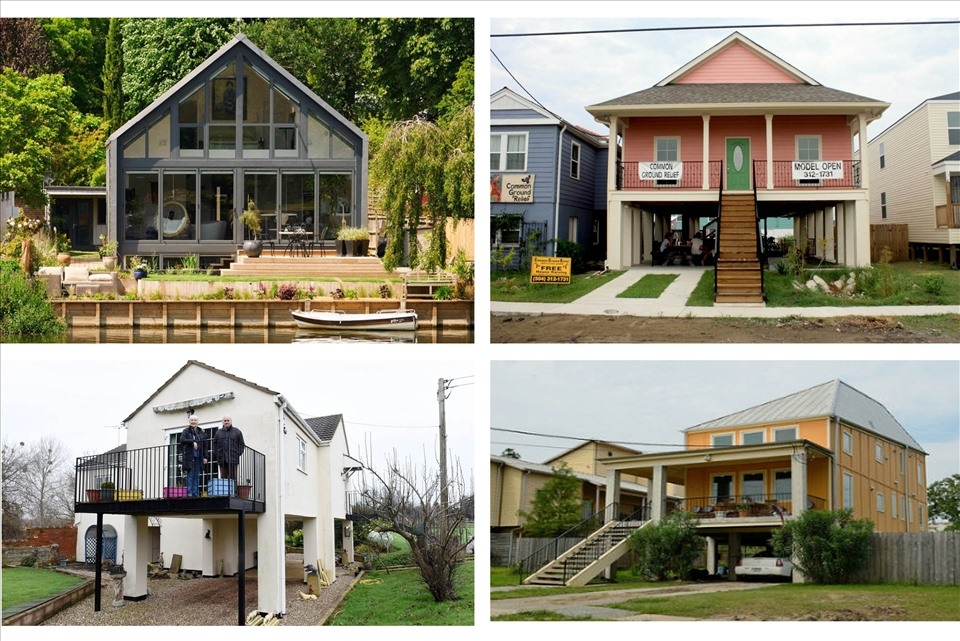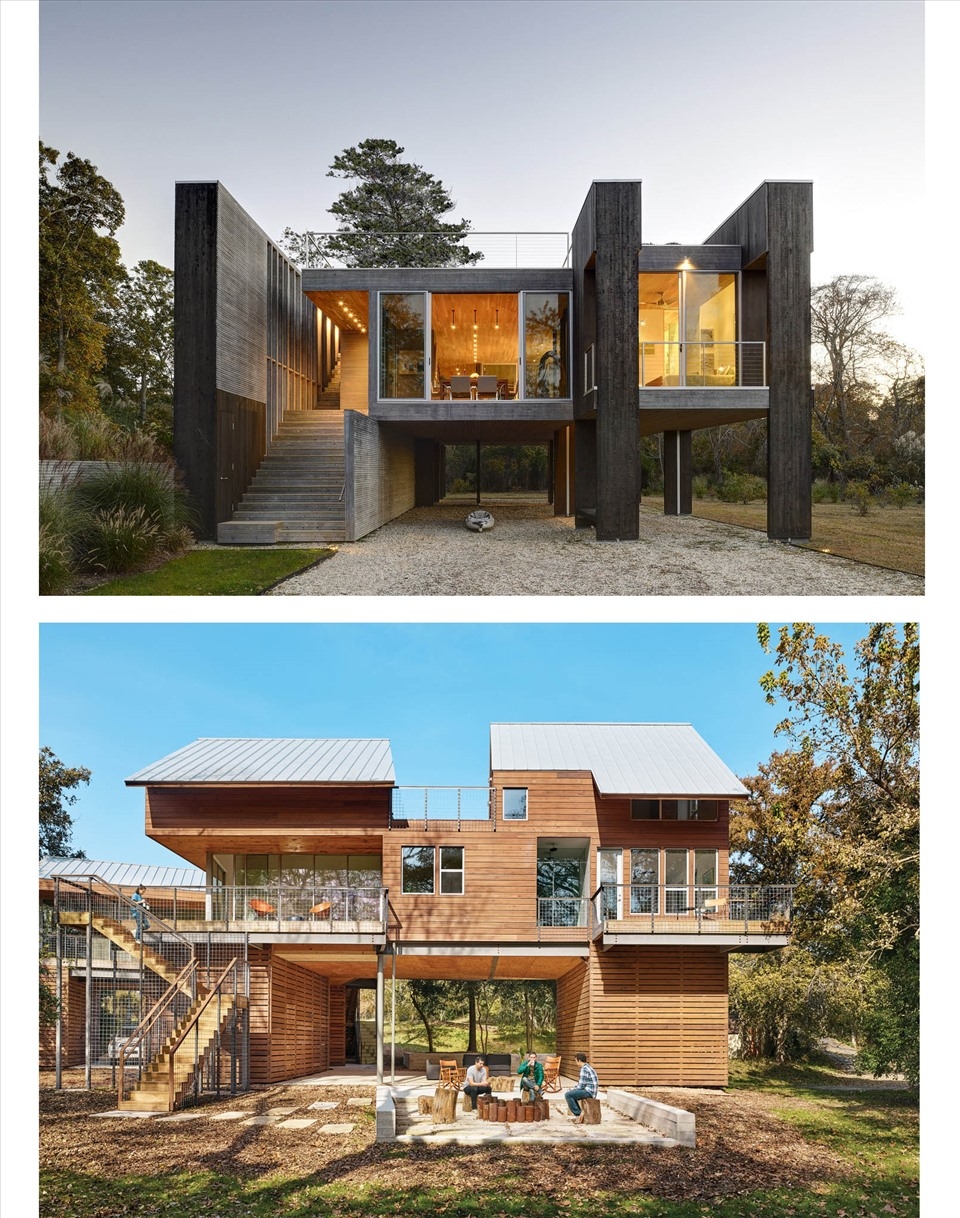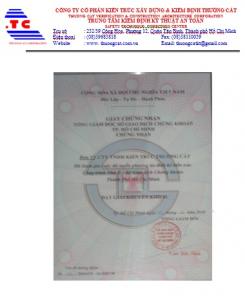News
adv left
An excellent flood-proof housing architectural design scheme
Architectural construction with anti-flooding materials
In most cases, floodwaters can displace foundations, collapsed structures, floating fuel tanks, etc.So you can use flood-proof materials - materials that can exposed to flood water for at least 72 hours without significant damage.
To prevent these damage, flood-proof materials must be durable and resistant to high humidity such as concrete, glazed tiles, insulating foam, steel hardware, pressure-treated plywood, ceramic tiles, and glue. water resistant, polyester epoxy paint, ...
 |
|
|
Some housing architectures are effective against flooding. Graphics: Trang Thieu
Use waterproof coatings, sealants and veneer wood
There are two different types of flood protection: wet and dry. Anti-flooding prevents the intrusion of flood water, prevents wet-flooding allowing flood water to enter the house. Coatings, sealants and waterproof veneer wood prevent water from entering.
For inner walls, you should use foam insulation that has good water resistance. Likewise, coatings and sealants can be applied to foundations, walls, windows and doors to prevent flood water from entering the home through cracks, as these gaps are rarely designed to withstand loads from floodwaters.
Advanced and flood proof for indoor appliances
Indoor appliances should be placed above flood-proof levels. These devices include ventilation systems, air conditioners, plumbing systems, plumbing fixtures, plumbing systems and electrical equipment including gauges, switches, and sockets. If these parts are submerged in floodwaters, they can be severely damaged and cause danger.
Particularly for electrical equipment, they can pose a risk of fire if they are short-circuited. Ideally, these components should be installed above flood water level. In addition, they can be designed to prevent damage from flooding through waterproof enclosures, barriers, protective coatings or other techniques to protect vulnerable parts.
 |
| Architectural design plan for flood-proof housing. Graphics: Trang Thieu |
Install a vent or suction pump
Install vents on the foundation to allow floodwater to flow through the house instead of collecting it around the house. This solution provides outlet for floodwaters and reduces the damage pressure caused by floodwaters to the windows and walls.
A suction pump is a type of device used to pump water out of basements where waterlogging occurs frequently. Currently, septic tank suction pumps with spare batteries are recommended to allow them to continue operating during a power outage.
Construction of fixed barriers
Putting a permanent fence around the house architecture can prevent flood water from entering. Such fences should be constructed of concrete or brick, or a dyke made of compact layers of soil with a waterproof core.
Although this seems the simplest, most obvious solution, both the floodwaters and walls require great maintenance. In particular, the dyke requires a considerable amount of land to construct.
News other
- Suburban house for 3-generation family with rice drying yard on the upper floor(04/10/24)
- Catch the sun in the townhouse(04/10/24)
- 3-storey house designed for three-generation families(23/05/24)
- Fall in love with the open, dark-toned villa design in Binh Duong(22/05/24)
- Impressed with the 5-storey townhouse design that is always airy(22/05/24)
- Furnished 3-bedroom apartment is only 330 million VND, surprisingly beautiful inside(16/05/24)
- The house designed two skylights to help circulate air(16/05/24)








